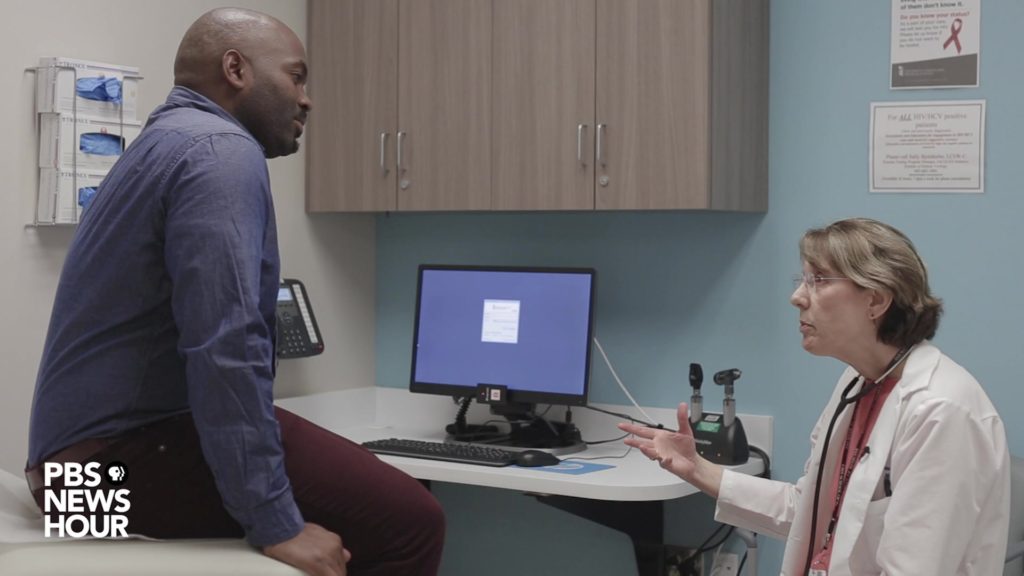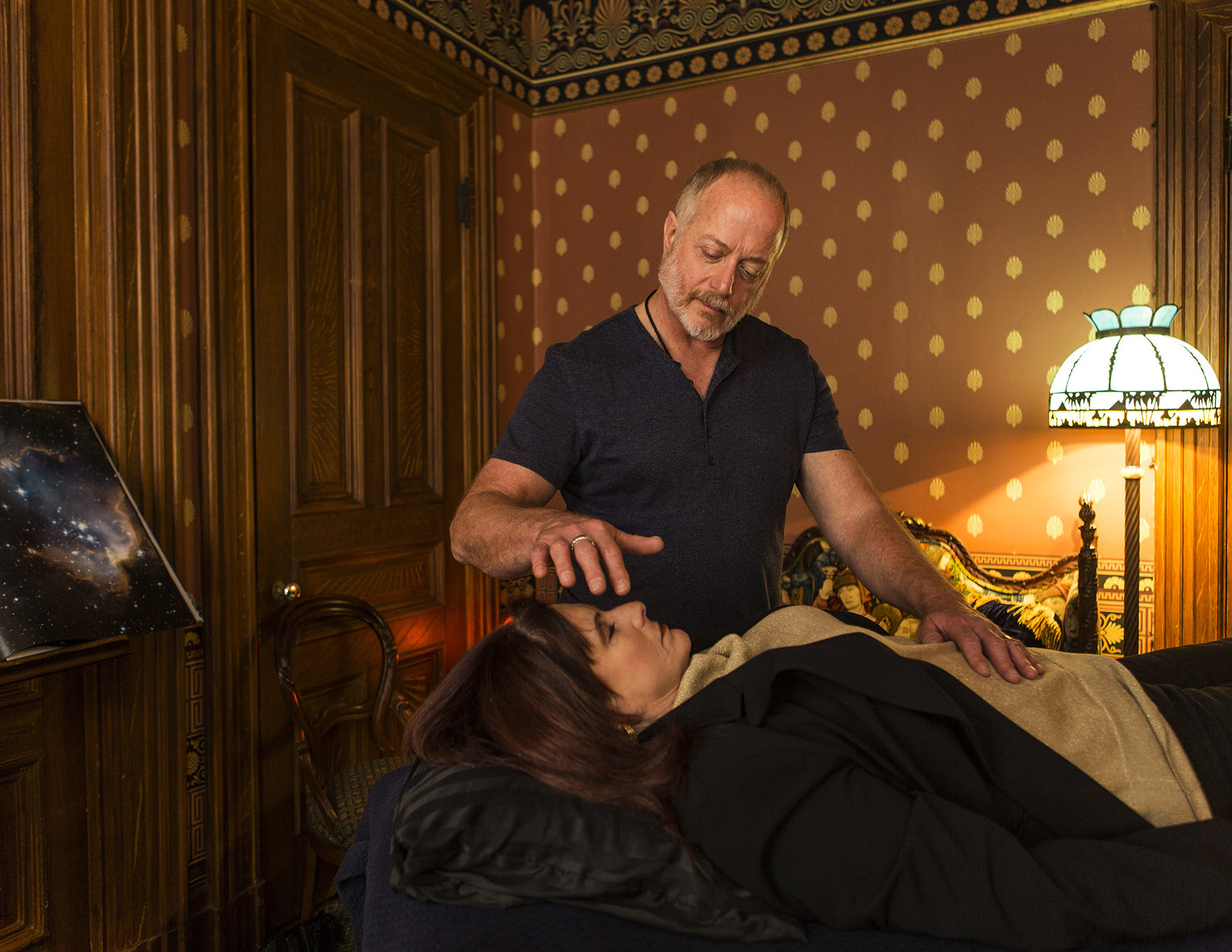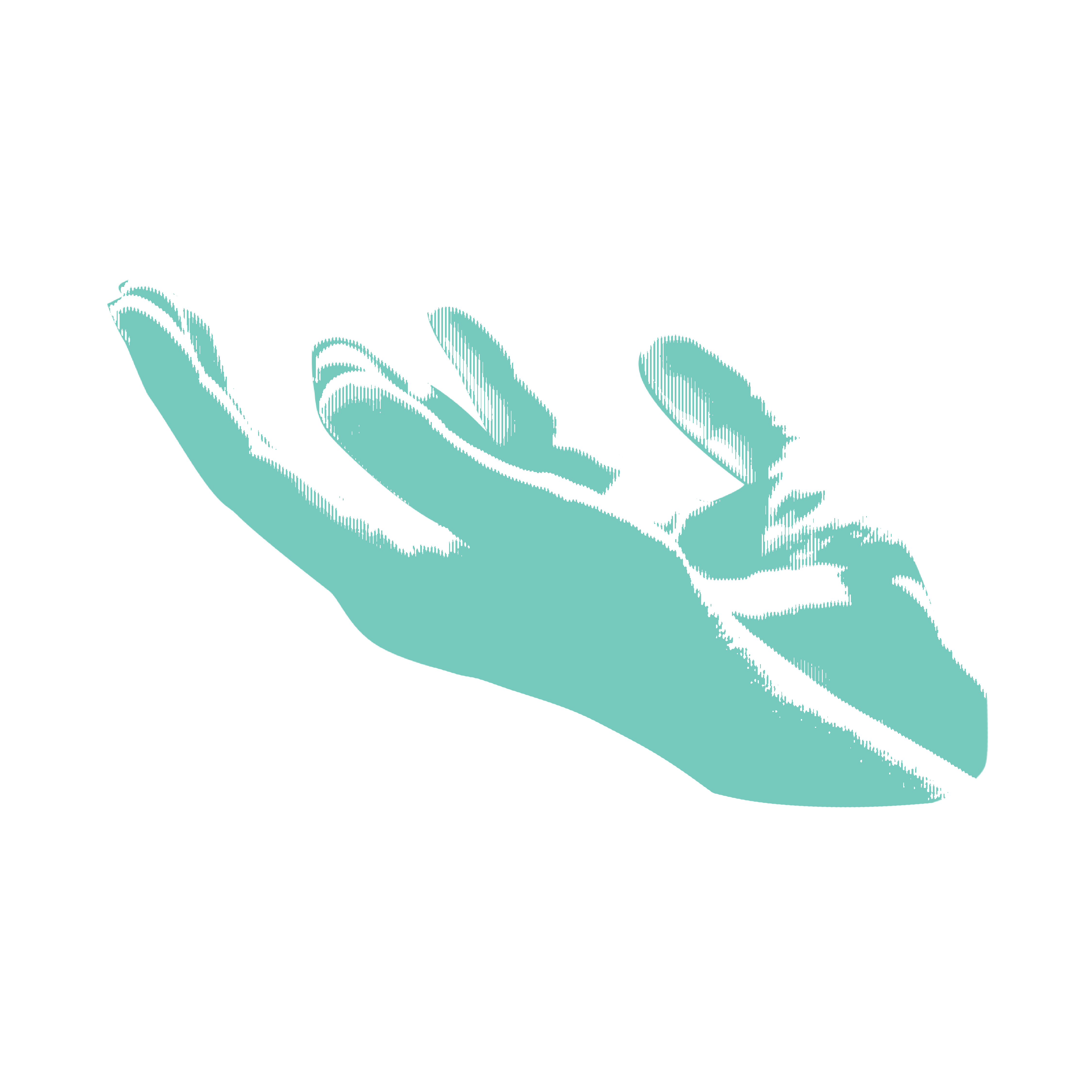
High in the mountains northeast of Mexico City, practically hanging off the side of a mountain, is the tiny town of San Pablito, Puebla. Located in a lush cloud forest, the town isn’t easy to reach. The last 35 miles alone take two hours by car, zigzagging above stunning forested canyons and past waterfalls that seem to materialize out of the ever-present mist.
The laughably steep streets and constant fog make the town feel almost magical, which is fitting since it’s for magic that the town is famous.
San Pablito is home to a unique style of healing that employs figures cut out of special paper, called amate. Curanderos, or healers, or, use these figures to absorb the evil spirits behind all manner of physical maladies.
Guadalupe Huaxi is one of the most popular curanderas in San Pablito. A small and formidable Otomi woman (the local indigenous community), she’s quiet and thoughtful. Sitting on her back porch, she said her work straddles the old world and the new.
“Most people come here with some sort of pain, something that has not responded to medicine,” she said through her husband, Juan Merida, who translates into Spanish. “Sometimes you go to a doctor, but medicine doesn’t work.”
I’m here to understand the intersection of faith and healing in this community, but I’m also interested in relief for a knee that been inexplicably bothering me since I turned 40 last year. After a short conversation with her husband I learn that part of the ceremony may involve her taking blood from my knee with her mouth.
"But we now know that much of what we call the placebo effect is chemical–where the brain actually self-medicates with its own pre-existing drugs."
While researching my book, “Suggestible You”, on the science of belief, I have visited healers in the U.S., China and Mexico. I’ve been blessed, cursed and tortured in countless ways. But this would be the first time anyone chewed on my knee.
Huaxi and Merida began the ceremony, wiping me down with leaves and creating a sort of altar with candles and small paper figures.
Huaxi finished her chanting, had me sit down on a bed and leaned over me. She attached her mouth to my knee and began sucking. I half expected her to cut me or bite me until I bled but she never broke the skin. The drawing of blood, it seems, is metaphorical and not literal. It was still an odd feeling and an awkward position to be in and I was suddenly aware of every sensation in my knee. It went on for several minutes. Occasionally, she spat the foul “blood” into a packet of herbs.
Eventually it was over, and she told me to abstain from sex for a few days while Merida took my bad blood out to dispose of it. I thanked them, chatted a bit more and then walked back to the car. It was only then that I realized I didn’t feel any pain in my knee anymore. I’d been cured.
Some might say that Huaxi healed me and others that I was deluding myself. But in recent years, scientists in the U.S. and Europe have been investigating an area of brain science that splits the difference between these two reactions – the placebo effect.
You Are What You Think
Over the past couple decades, placebo research has gone from a fringe endeavor to mainstream brain science. And while it’s impossible to know just what role placebos play in traditional medicine across the world, neuroscientists have uncovered a few clues that shed some light on how sucking on someone’s knee actually can relieve them of pain.
Placebo effects take many forms–some are purely statistical (the term “regression to the mean” applies to anyone who gets better after a treatment but would have done the same even without it). Others apply to patients simply trying to please a doctor. Most, like with my knee (which started aching again the next day or so), are temporary. But we now know that much of what we call the placebo effect is chemical–where the brain actually self-medicates with its own pre-existing drugs.
“Every time we receive a treatment or a surgical procedure or [an injection,] we expect analgesia. We expect to get better,” said Luana Colloca, a placebo expert at the University of Maryland. “Any kind of expectation for improvement can trigger descending pain modulation in the brain.”
The discovery of this internal pain modulation began in the 1970s when scientists found that some placebo effects were linked to endorphins–or internal opioids–being released in the brain. Over the next couple decades, a few dedicated experts pieced together how those and other chemicals were triggered by simple beliefs, or expectations, as psychologists call them.
In the 2000s, placebos entered the mainstream when scientists began to see these interactions in brain imaging machines. Suddenly, they could see how expectation triggered the release of various neurotransmitters: dopamine in Parkinson’s patients as well as cannabinoids, serotonin, or opioids in patients told they were taking actual medicine. In other experiments, people even responded after being told that the pill was a placebo.
Scientists have since shown that placebos can produce powerful, measurable experiences triggered by conscious or unconscious expectations. Conscious expectations are generated through, among other things, the power of the storytelling. Magnets, cosmic rays, ancient magic, mysterious toxins, science-y sounding explanations, all of these can catch our imagination and enhance a placebo effect.
Unconscious placebos are triggered by conditioning (such as the hundreds of times you’ve taken a pill in your life and felt relief) or by subtle signals around you. Imagine walking into a doctor’s office in a dingy loft littered with musical instruments and car repair manuals. Imagine the doctor wearing ripped jeans and a parka over an undershirt. How much confidence would you have in the treatment?
Colloca said that expectation can trigger the brain to release pre-existing–or endogenous–opioids in the brain. “Endogenous opioids are very similar to exogenous opioids like oxycodone and many other opioids that we use daily in clinical practice to reduce pain. These mechanisms are quite powerful.”
Colloca said that the subtle signals of a doctor’s office–the stethoscope, the white coat, the poster of the human body–play a key role in triggering expectation. In fact, many patients report feeling better as soon as they step into a hospital.
To demonstrate the effect of expectation, Colloca sits NewsHour producer Nsikan Akpan in a chair and straps a device to his arm that can deliver painful burning sensations. For 20 minutes she shows him a green light just before giving him minor pain and a red light before a more powerful burning sensation.
Standing behind the technician controlling his torture, I watch as each burn is paired with the correct color. Then, in the last few minutes, she changes it without saying anything. Every burn is near his highest pain threshold, though the colors keep changing. Sure enough, whenever he sees the green light, he barely registers the pain he’s feeling.
"Pain, depression, irritable bowel syndrome, anxiety, Parkinson’s disease, and even addiction seem particularly susceptible to placebo."
“I literally cannot believe that I wasn’t feeling the lower heat,” he said once the truth is revealed.
Akpan’s distorted pain experience is a classic placebo response. But not all placebos are this effective. Some conditions seem to naturally respond better than others. Pain, depression, irritable bowel syndrome, anxiety, Parkinson’s disease, and even addiction seem particularly susceptible to placebo. Others that may also join the list are autism, autoimmune disorders, asthma and immune response. Meanwhile, cancer, obsessive compulsive disorder, and Alzheimer’s disease don’t seem to respond as well to placebo.
But more than that, placebo effects pop up in all manner of unexpected places like sexual dysfunction, athletics and even making Coke taste better than Pepsi. In fact, once you start looking for them, placebos sneak into every part of our lives because expectation is in every part of our lives.
“It’s really a family of mechanisms,” said Tor Wager, a neuroscientist and placebo expert at the University of Colorado, Boulder, who did some of the earliest imaging studies of placebos. “If you were to get in a virtual reality roller coaster, you would feel your stomach turn. That’s a type of placebo.”
Wager, who now focuses mostly on chronic pain, is an expert in how the placebo effect can be used to ease suffering. And nowhere is that more obvious than Huautla de Jimenez, Oaxaca.
The Peer Pressure of Expectation
Huautla is about 175 miles south along the Eastern Sierra Madres from San Pablito. Like San Pablito, it looks like the town was dribbled from a ladle down a mountainside. And like San Pablito, it’s famous for its magic. Long before the Europeans came to these clouded valleys, the local Masateca people engaged in a special form of healing involving herbs, chanting and psychedelic mushrooms.
In the late 1950’s an amateur mycologist came to the town, brought a few of the local mushrooms back to his home in New York and wrote a story about it in Life magazine. The story focused on one healer in particular, Maria Sabina, who had introduced him to the mushroom ceremony. Perhaps in another decade the article might have gone unnoticed, but the 1960s brought a steady stream of hippies, rock stars and searchers to the sleepy little town.
Today, years of drug tourism have reshaped the town, with mushrooms painted on taxis, murals and even on its welcome archway. As soon as you step off the bus, taxi drivers and so-called “healers” amble up and murmur “champiñones” or “hongos” (Spanish for mushrooms) under their breath to anyone who looks like a tourist. Many, including Sabina herself, say that the mushroom ceremony has been forever desecrated, thanks to mushroom tourists.
But beyond the mushrooms, there is still a vibrant culture of curanderos here. In fact, sitting in room of 10 curanderos my first day in Huautla, I learned that most don’t even use mushrooms for healing.
Elodia Piñeda Garcia is a schoolteacher and curandera in town. Sitting in her home perched halfway up a mountainside with a dazzling view of the valley below, she said that traditional healing helped her overcome chronic pain that arose after multiple car accidents. Since then, she has learned to treat others, often using an egg to absorb sickness.
“Human beings are like any other object, they accumulate dust with time. One can get full of problems–bad air, bad spirits–so the egg helps to clean yourself,” she said.
Walking up on her roof to a room reserved for healing, she explained that the space was important. A bunch of locks on the door, for example, would erode the patient’s sense of safety and trust in the healer. Inside, she has a small cot for massage and an altar with various herbs, tobacco and pictures of saints.
She performed a ceremony similar to Huaxi but rather than directly sucking out the disease, she took a mouthful of water and made a slurping noise across my body. After a series of other rituals, she finished by spitting the water over my face. It took my breath away. I sat for a moment, totally stunned. Piñeda Garcia said this is the point.
“Picture it as a clogged hose, to unclog it you have to do things suddenly. That’s why you have to catch them by surprise,” she said.
Wager, it seems, agrees. A big part of placebos and expectation are tied up in how we allocate attention. When Huaxi sucked my knee, it sharpened my attention, just as when Piñeda Garcia spit water over my face.
“Novelty is one of the most powerful and reliable ways to activate a placebo,” Wager said. “There’s something about an experience that is just out of the ordinary.”
Colloca agreed but said there was one other important element beyond storytelling, ambiance and surprise involved in cultivating powerful placebo responses. Humans are inherently social creatures, and placebos likewise flourish in groups. She has been looking at the effects of social dynamics on pain placebos and has found that many of the chemicals our bodies produced when we are around friends and family–like oxytocin and vasopressin–can dramatically increase placebo effects. Furthermore, watching people receive relief can have a similar effect on people in pain. Her lab is currently trying to locate the parts of the brain involved in this.
In addition, she’s also experimenting with clinical applications of placebo. After all, placebo effects are not limited to the Mexican highlands. A doctor’s office and all the theater around modern medicine is just as suggestive to us as eggs and water are to the people of Huautla. So Colloca’s latest experiment involves prescribing medicine to chronic pain patients in the university hospital across the street.
Except not all the pills are real, some are placebos. Her hope is to use the real pills to train patients’ brains to self-medicate while taking fake ones. To allow internal drugs to replace actual drugs. In theory, this should be a first step to helping the brain self-medicate permanently.
In fact, some experts believe the difference between a person with chronic pain and one without is that the former simply isn’t self-medicating–or failing to trigger placebo pathways. It’s a new and still untested idea but, if true, would go a long way not only to treating pain but avoiding the crippling effects of opioid addiction.
Colloca and Wager are hesitant to paint with too broad a brush but both say placebos function far differently in society than in a laboratory. Others downplay the placebo effect altogether, saying it really just boils down to regression to the mean. No fancy brain chemicals or self-medication, just statistics. It’s a provocative and interesting idea but doesn’t really explain what happened to Akpan in Colloca’s pain chair.
Also, when Akpan sat down he didn’t bring along 1,000 years of tradition or the power of his entire community’s expectations. Yet he still had a placebo response, almost on cue. When we add community, tradition and culture to a healing, there’s no question the placebo response goes up. And when this happens, there is another word that better captures the placebo experience, not just in Mexico but in every community on Earth. It’s a much simpler and more familiar word.
“If the person doesn’t have faith it won’t work,” Piñeda Garcia said. “If you don’t have faith it would be pointless.”







